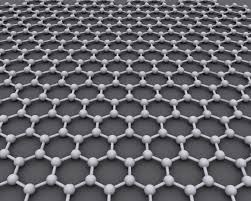Ever since materials scientists were able to successfully isolate single-layer graphene, the interest in using the material in numerous electronics devices has only grown stronger with every passing year. The electronic properties of graphene are considered as being ideal for fabricating numerous electronic devices. These excellent conduction properties of graphene have been utilized to achieve numerous breakthrough products over the recent years. With a mounting use of graphene in electronics, the global graphene electronics market is expected to have a staggering CAGR of 60.7% between 2015 and 2025. In terms of value, the market is expected to rise dramatically from its 2014 value of US$8.5 mn to US$1.2 bn by the end of 2025, says Transparency Market Research.
Browse Research Report: http://www.transparencymarketresearch.com/graphene-electronics-market.html
However, it is not just the superconductivity of graphene that will fuel the unprecedented growth of the global graphene electronics market. Graphene’s advantages over conventionally-used conducting materials will be a contributing factor to the global graphene electronics market. From batteries with superlative performance to flexible display screens to graphene-based chips, the applications of graphene in electronics are only expected to expand over the next few years.
Here are a few notable areas where graphene is blazing a trail in the electronics sector:
Flexible displays: A remarkable fall in the prices of graphene-based displays has been a landmark development in the larger graphene electronics market. Take for instance a pioneering development reported by Plastic Logic, a manufacturer of plastic displays, in partnership with the Cambridge Graphene Center. The company launched what it claims is the first ever graphene-based display in the world. Several other companies are reporting groundbreaking research in displays based on graphene, and this escalation in activities has greatly helped the cost of graphene-based displays to plummet.
Random access memory: Consumers increasingly have demanding needs when it comes to memory. To this end, a team from the University of Nebraska in Lincoln combined graphene with ammonia to discover an interesting phenomena – this combination was capable of stopping and starting the flow of electronics to a great degree. This critical improvement to the ferroelectric tunnel junction means that data stored in RAM doesn’t have to be rewritten, creating a decidedly more reliable memory storage solution.
Heat management within electronics: Graphene boasts excellent cooling properties – an aspect that makes this material an exceptionally efficient alternative to conventional materials such as aluminum and copper. As the size of electronics shrinks with every passing year, the demand for a material that can offer better cooling properties even with a restricted surface area is higher than ever. Where excellent thermal conductivity is required, graphene-based film could be the smartest solution. In July 2015, the Chalmers University of Technology, based in Sweden, developed a technique that will further enhance the thermal conductivity of graphene-based film. With this, a more efficient solution that can dissipate the heat generated by electronics is in sight.
Browse Press Release: http://www.transparencymarketresearch.com/pressrelease/graphene-electronics-market.htm
While these examples provide only a peek into the exciting times that lie ahead for the graphene electronics market, several scientists opine that graphene by itself will fail to display the desired results in many applications and will have to be used in conjunction with other materials. This could slow down the growth of the graphene electronics market marginally.

No comments:
Post a Comment